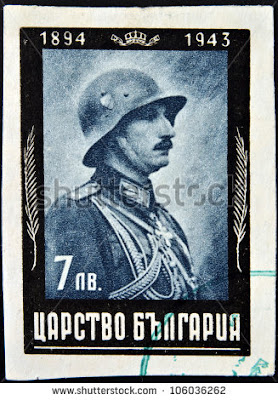Hey look! It's King Boris III
He was nominally a member of the Axis during the Second World War and kind of a douche, but here's the deal; Boris allied himself only reluctantly with Hitler in order to have two disputed regions restored to Bulgarian rule. Then Boris immediately became a royal pain in Hitler's neck. Boris refused to participate in offensive action against the Soviet Union and he adamantly refused to deport Bulgarian Jews as Hitler insisted he do.
Hitler was increasingly steamed at Boris and called him to a meeting in Berlin in July of 1943 which was pretty heated. Boris died two weeks after that meeting and much evidence points to the cause of his death being a slow-acting poison. Among his staunch supporters was the future Pope John XXIII who admired Boris' protection of the Jews and thought he was a pretty righteous dude.
But let's be clear, although Boris refused to deport Bulgarian Jews to Hitler's death camps, the government of Bulgaria barred Jews from voting and holding a public or elected office, they couldn't marry ethnic Bulgarians, serve in the army, adopt Bulgarian names, own land, radios, or telephones. Additionally, a one-time 20% of net worth tax was levied on the Jews...but other than that Boris was a peach.
He was a complex guy.
And let's not overlook the fact that he had a rockin' moustache.
Here's the walk around of the m.36/A
This handsome helmet was influenced by the
Germanic design of the era.
The ventilator is an applied bushing and is very robust in appearance.
The rolled edge of the rim is the primary distinction between the m.36/A and the m.36/C (the grist of a future post). The steel is also a little thicker on the m.36/A.
Like the ventilators, the heads of the split pins which secure the liner band are also somewhat oversized.
The skirt in this rear view is particularly flared.
There is a subtle crest on the crown.
The paint is applied lavishly.
All of the leather is of particularly high-quality, note the
styling detail of the keeper.
This is the only marking of any sort.
The ventilation bushings are peened over a stout washer.
Secured with another washer is the large-headed split pin seen here attaching the metal liner band to the shell. The smaller split pins affix the leather liner to the band.
The chinstrap bails are sturdy though conventional.
As always, here are photos of the m.36/A (or possibly /C) in action:
And there you have it; a good-looking helmet which I'm happy to have in the collection.
See you next time with another cool helmet from the collection.
Mannie





























































